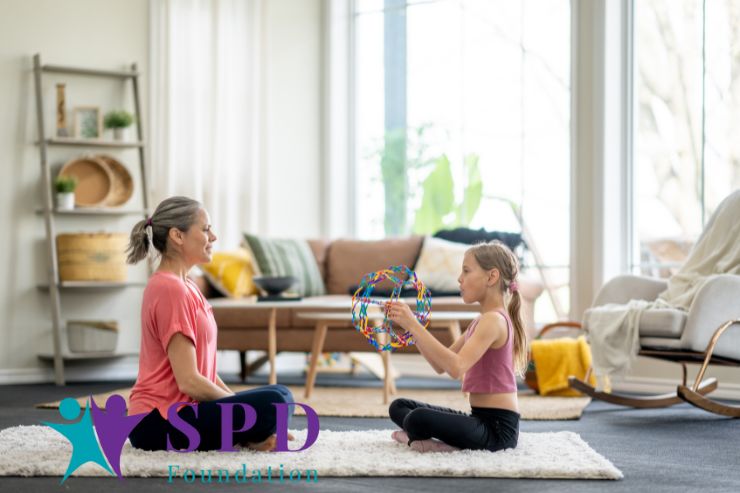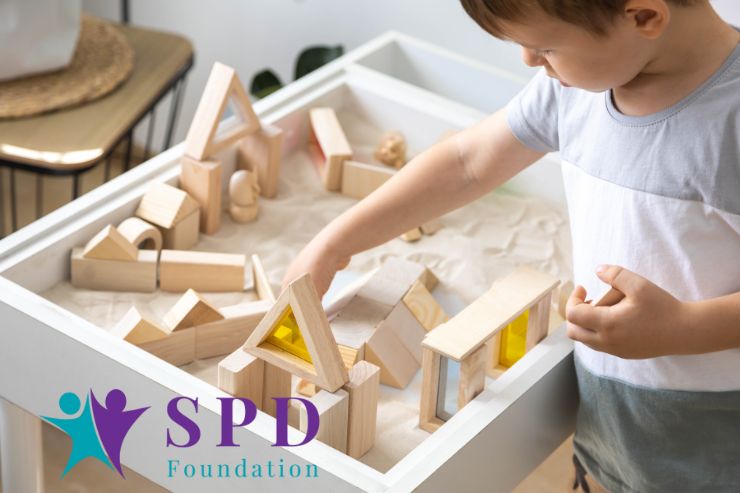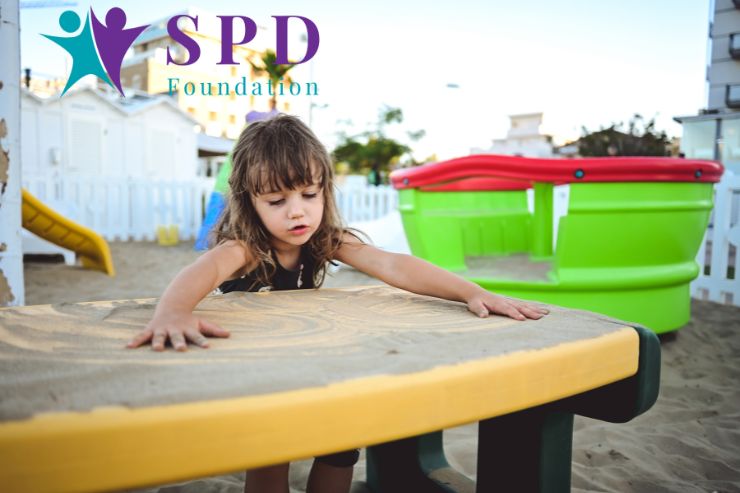Sensory challenges arise when an individual’s brain has difficulty processing sensory information, leading to hypersensitivity or under-responsiveness:
- Hypersensitivity means being overly sensitive to stimuli like light, sound, or touch, which can make everyday environments overwhelming.
- Under-responsiveness involves a muted response to sensory inputs, such as not noticing injuries or being indifferent to changes in temperature.
Recognizing these challenges is the first step in seeking appropriate support and creating strategies that can significantly improve daily functioning and quality of life.
The Role of Professionals in Sensory Care
A variety of professionals are essential in managing sensory challenges effectively. Occupational therapists, for example, specialize in sensory integration techniques that help individuals engage more comfortably with their environment.
Speech therapists can assist those whose sensory issues affect communication, and psychologists address the emotional and behavioral aspects of sensory processing difficulties. These experts not only tailor interventions to the individual’s needs but also empower families with knowledge and strategies for creating supportive home environments.
Forming a Collaborative Team

Addressing sensory challenges most effectively often requires a collaborative team that includes medical professionals, educators, and family members. This team approach allows for a comprehensive understanding of the individual’s needs from multiple perspectives, which enriches the care plan.
Medical professionals bring insights into the neurological and physiological aspects of sensory challenges, educators contribute information about the individual’s learning and social interactions, and family members provide a deep understanding of the individual’s daily routines and preferences.
Strategies for Effective Collaboration
Effective collaboration is rooted in open communication and mutual respect among all team members. Regular meetings are vital, as they allow the team to share observations, discuss progress, and refine strategies.
A unified approach ensures that interventions are consistent and supportive across different environments, such as home, school, and therapy sessions, enhancing the effectiveness of the strategies implemented.
Integrating Therapies and Approaches

A holistic care plan integrates various therapeutic approaches, addressing different aspects of sensory processing issues. Occupational therapy might focus on sensory integration, while speech therapy could target communication enhancements, and behavioral strategies might be applied to manage associated emotional challenges.
This integrated approach ensures that care is comprehensive and cohesive, meeting the unique needs of the individual.
The Importance of Family Involvement
Family involvement is crucial in the management of sensory challenges. Families can provide unique insights into the individual’s preferences and daily challenges, which is invaluable for tailoring interventions.
Their active participation in therapy sessions also strengthens their understanding and implementation of strategies at home, enhancing the continuity and effectiveness of care.
Navigating the Educational System

For children with sensory processing issues, collaboration with educators and school administrators is essential to ensure they receive the necessary support and accommodations.
This might involve individualized education plans, sensory breaks, or classroom modifications to create a more conducive learning environment.
Technology & Sensory Challenge Solutions

Sensory-friendly apps are designed to provide tailored sensory experiences that can help individuals regulate their sensory input. These apps come in various forms:
- Visual Apps: Often include calming patterns or scenes that can help reduce sensory overload.
- Auditory Apps: Might feature soothing sounds or white noise to help mitigate the effects of overwhelming environmental noise.
- Interactive Apps: Enable users to control sensory inputs in a way that suits their individual needs, providing a safe space to explore sensory experiences without overwhelming them.
These apps are not only helpful in providing immediate relief but can also be used as tools in therapy to teach individuals how to manage their sensory experiences more effectively.
Virtual Therapy Sessions
The advent of telehealth has made therapy more accessible than ever, especially for those who face challenges in physically attending sessions. Virtual therapy sessions can be particularly beneficial for individuals with sensory processing issues for several reasons:
- Comfort of Familiar Environment: Being in a familiar environment can reduce the sensory stress that might come with new or clinical settings.
- Flexibility: Sessions can be scheduled at times when the individual is most receptive, making therapy more effective.
- Broader Access to Specialists: Virtual sessions allow individuals to connect with therapists who specialize in sensory challenges but may not be geographically nearby.
Assistive Devices
Assistive devices are designed to help individuals manage their sensory environments and can be crucial in daily life:
- Noise-canceling Headphones: These devices can help individuals with auditory sensitivities by reducing background noise, making environments like classrooms or public places more manageable.
- Weighted Blankets: Often used to provide deep pressure, which can be calming for those who are overwhelmed by sensory input. This type of pressure mimics a therapeutic technique known as deep pressure stimulation, which can help reduce anxiety and improve focus.
- Customizable Lighting: For those sensitive to light, having the ability to adjust lighting through smart home devices can create an environment that minimizes discomfort and enhances the ability to focus.
Integration with Everyday Technology
In addition to specific devices and apps, everyday technology is also becoming more adaptable to the needs of those with sensory challenges. Smartphones and tablets, with their customizable settings, allow individuals to adjust sensory inputs like brightness and volume. Even more, home assistants can control environmental variables such as lighting, temperature, and sound, making homes more comfortable for those with sensory sensitivities.







